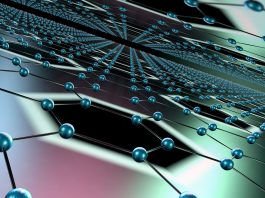Researchers from the University of Cambridge are following the movement of atoms as they cluster to form two-dimensional materials, a single atomic layer thick, which could result in better materials design.
The group’s results, reported in the journal Physical Review Letters, could be utilised to develop new types of materials and quantum technology devices.
The University of Cambridge team recorded the movement of atoms at speeds that are eight orders of magnitude too fast for conventional microscopes.
Two-dimensional materials, like graphene, can potentially be used to enhance the performance of existing and new devices, due to their unique properties, such as exceptional conductivity and strength.
These materials have various untapped applications, from bio-sensing and drug delivery to quantum information and quantum computing. However, for two-dimensional materials to reach their full potential, their properties need to be fine-tuned through a controlled growth process.
Two-dimensional materials generally form as atoms, ‘jumping’ onto a supporting substrate until they attach to a growing cluster. The ability for scientists to monitor this process gives them far better control over the finished materials.
However, for most materials, this process happens at such fast speeds and at such high temperatures that it can only be monitored using snapshots of a frozen surface, recording a single moment rather than the whole process.
Now, researchers have been able to follow the entire process of moving atoms in real time – using a method known as ‘helium spin echo’ – at temperatures comparable to those used in industry.
The technique has similarities to magnetic resonance imaging (MRI), but uses a beam of helium atoms to ‘illuminate’ a target surface, similar to light sources in everyday microscopes.
“Using this technique, we can do MRI-like experiments on the fly as the atoms scatter,” said Dr Nadav Avidor from Cambridge’s Cavendish Laboratory, the paper’s senior author. “If you think of a light source that shines photons on a sample, as those photons come back to your eye, you can see what happens in the sample.”
In replacement of photons, the team use helium atoms to observe what happens on the surface of the sample. The interaction of the helium with atoms at the surface allows the motion of the surface species to be inferred.
Using a test sample of oxygen atoms moving on the surface of ruthenium metal, the team documented the spontaneous breaking and formation of oxygen clusters, just a few atoms in size, and the atoms that quickly diffuse between the clusters.
“This technique isn’t a new one, but it’s never been used in this way, to measure the growth of a two-dimensional material,” commented Avidor. “If you look back on the history of spectroscopy, light-based probes revolutionised how we see the world, and the next step – electron-based probes – allowed us to see even more.
“We’re now going another step beyond that, to atom-based probes, allowing us to observe more atomic scale phenomena. Besides its usefulness in the design and manufacture of future materials and devices, I’m excited to find out what else we’ll be able to see.”









